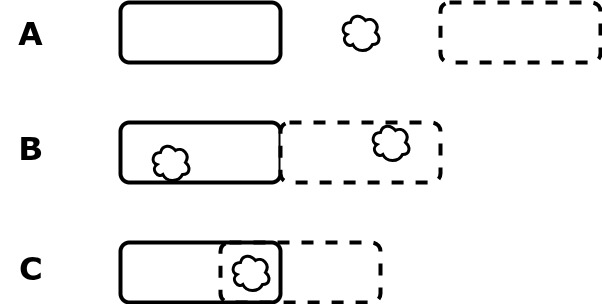Boundaries
Introduction to the week
In this week we investigate three new concepts which have direct and indirect bearings on your ability to think reflectively. The first are boundary objects and how understanding these can help you cross boundaries both in your own thinking and when talking to other people. The second is the idea of threshold concepts which are important for you to be able to recognise so that you can improve your learning. Thirdly we discuss liminal states which, if you can overcome them, allow to progress beyond difficult concepts.
Boundaries
Every individual's understanding of a subject, or another person, will have boundaries. When two people interact they need to have a common terms of reference. The things which the two individuals understand allow this ‘bridging’ for their communication. Miscommunication can occur when two individuals’ understanding of a boundary object do not match. Individuals act within boundaries which are created by their own and societies' values, norms and practices and these influence their relationships and the meaning of their interactions. These differences lead to difficulties in their interactions with each other but also create opportunities for learning, communication and collaboration (Akkerman and Bakker, 2011). This appears to be true for groups but can also apply to an individual's reflection which is in many ways like an individual's conversation with themselves.
Nicolescu (2014) discusses boundaries between academic disciplines. He defines a boundary as being the limit of a discipline’s totality of results (past, present and future) which can be obtained by its laws, norms, rules and practice. He asserts that academics working within a discipline tend to be blind to these boundaries and blind to the discipline's incompleteness and the arbitrary elimination of the hidden third i.e. the interaction of the subject and the object. He proposes that the space between disciplines is the space where other ‘truths’ are accessible and that by including the interaction between subject and object that these ‘truths’ can be accessible.
From the perspective of reflection an individual's boundaries are likely to limit how they think and the sort of things that they reflect upon.
Types of boundaries

In the image above the rectangles represent two different people. The cloud represents a term or concept.
In A the thinking of the people involved is discrete with no overlap and there are concepts or ways of doing things which are not accessible to either person.
In B there is no overlap of the boundaries. The two concepts may be referred to by the same name but mean different things to each person. Using these terms or concepts will cause confusion between the parties involved unless explained.
In C the boundaries overlap. The cloud is a term or concept understood by both parties but may be understood differently.
Practice
Observe two or more people talking. This may be in a meeting, a social situation, on TV, etc.
Try to identify the boundaries that they have in their thinking
Try to identify which one of types of boundary this might be: A, B or C
